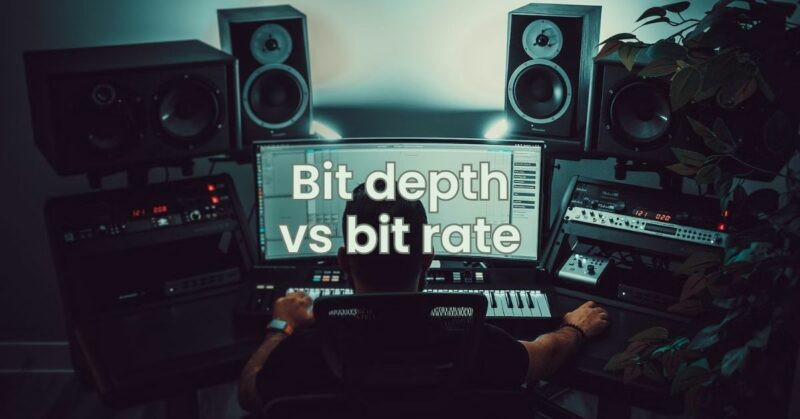In the realm of digital audio, terms like “bit depth” and “bit rate” often come into play, but they can be confusing for many. Both concepts are fundamental to understanding the quality and storage requirements of digital audio files. In this article, we delve into the differences between bit depth and bit rate, exploring their roles in audio quality and file size, and how they impact our listening experience.
- Bit Depth: Measuring the Precision of Audio
Bit depth refers to the number of bits used to represent the amplitude of an audio signal. In other words, it quantifies the precision or resolution of the audio data. Common bit depths for audio are 16-bit, 24-bit, and 32-bit. The higher the bit depth, the more accurate the representation of the sound wave, resulting in a greater dynamic range and improved audio quality.
For example, a 16-bit audio file can represent 65,536 discrete amplitude levels, while a 24-bit file can represent 16,777,216 levels. This extra precision in higher bit depths allows for capturing subtle nuances in the music, reducing the chances of audible quantization noise (distortion caused by rounding errors) and delivering a more authentic listening experience.
- Bit Rate: Measuring Data Transfer
Bit rate, on the other hand, is a measure of the amount of data processed or transferred per unit of time. It is usually expressed in kilobits per second (kbps) or megabits per second (Mbps). In the context of digital audio, bit rate determines the amount of data required to represent a specific audio file.
Audio compression techniques, such as MP3 or AAC, are used to reduce the bit rate of audio files. By removing certain audio data that may not be as noticeable to the human ear, these formats allow for smaller file sizes without significant loss of perceived audio quality. However, higher bit rates generally yield better audio quality and more accurate representation of the original sound.
- Impact on Audio Quality
Bit depth and bit rate have a significant impact on audio quality, but they operate in different ways. Bit depth affects the precision of the audio representation, affecting the dynamic range and subtlety of sound. Higher bit depths provide more headroom for capturing the full range of audio, especially in recordings with soft and loud passages.
Bit rate, on the other hand, affects the overall file size and, consequently, the potential for data loss during compression. Lower bit rates can result in lossy compression, which sacrifices some audio data to create smaller file sizes. Lossless formats, such as FLAC, preserve all the original audio data, yielding higher audio quality, but they come with larger file sizes.
- Finding the Right Balance
Choosing the appropriate bit depth and bit rate involves finding the right balance between audio quality and file size. For professional audio production and high-fidelity audio enthusiasts, higher bit depths (24-bit or 32-bit) are favored to capture the finest details and nuances of sound. In contrast, for online streaming and portable music players, lower bit rates and compressed formats are often used to minimize bandwidth and storage requirements without compromising overall listening experience.
Conclusion:
Understanding the difference between bit depth and bit rate is crucial for anyone working with digital audio files or seeking the best listening experience. Bit depth determines the precision and accuracy of the audio representation, while bit rate impacts the file size and data compression. By striking the right balance between these two factors, audio engineers and enthusiasts can ensure that the sound quality matches their desired standards, whether they prioritize fidelity or portability.


